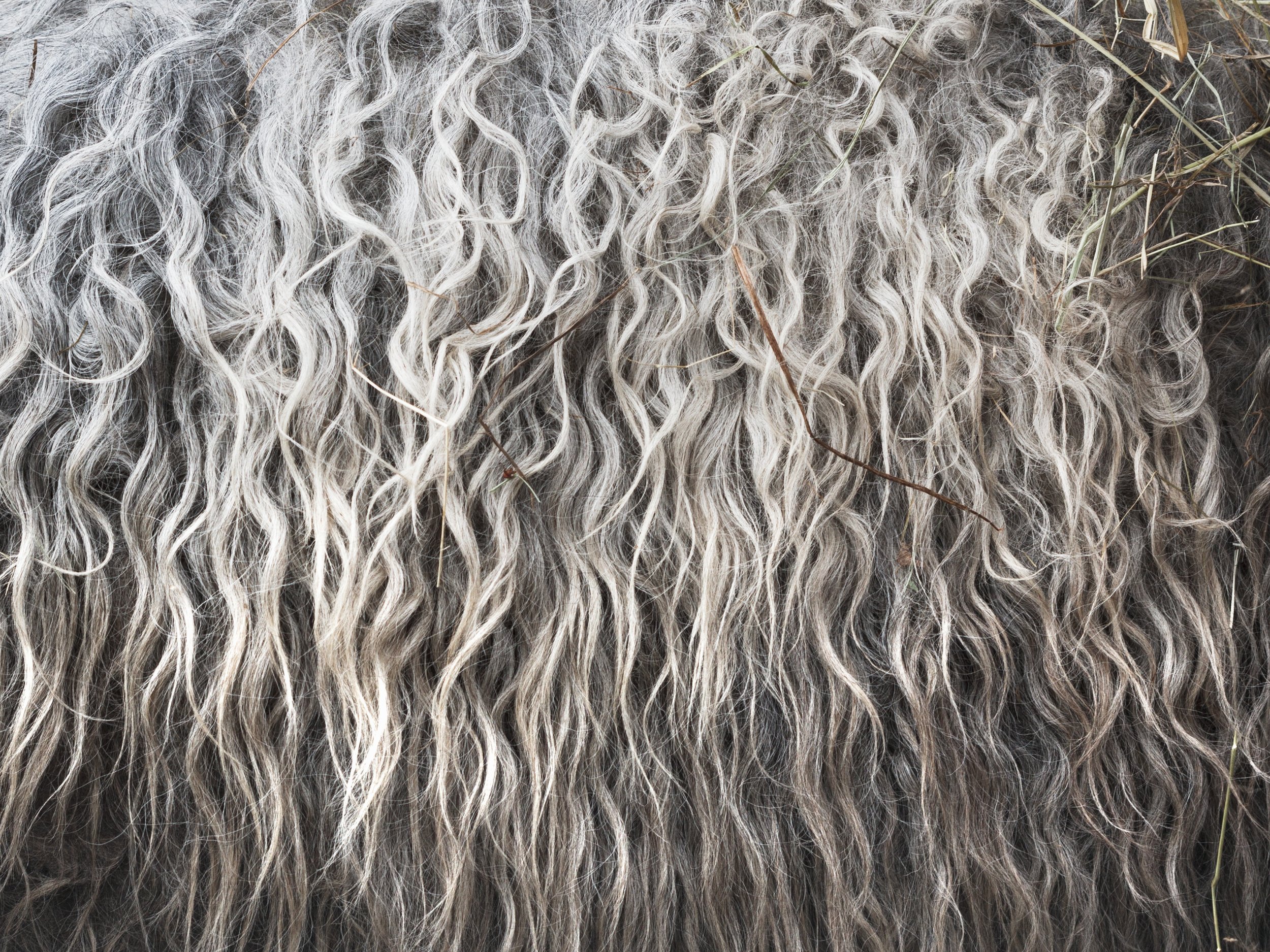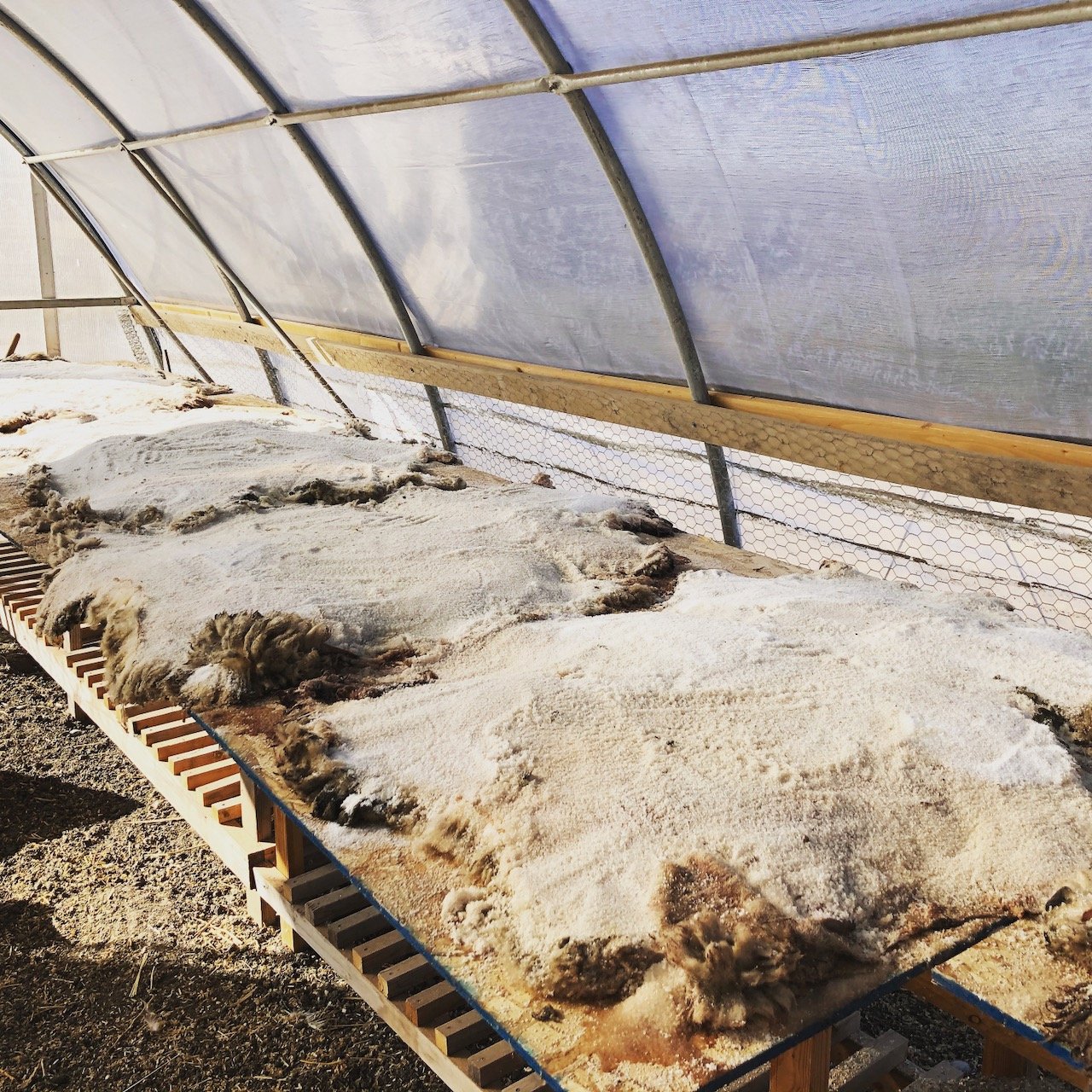FREQUENTLY ASKED QUESTIONS
We tan sheep, goat, and deer hides.
Does your process discolor the wool?
The tannin we use (mimosa bark) gives the back of your hide a soft brown hue. If your fibre is heavy with lanolin it can hold some of that color at the base of the rug with a slight pink effect. Direct sun may also give a slight pink hue to white hides over time just as hides tanned with chemical chromium will turn green. I much prefer the mimosa bark. Our process does not use bleach so hides heavy in lanolin, or animals fed a diet high in corn will often result in a yellowing of the wool. For best results keep your hides free of debris and dirt. If your animal is unavoidably dirty it is best to keep their wool at a shorter length allowing a more vigorous cleaning cycle.
Can you tan extremely long wool?
We pride ourselves on the work we do with long wool breeds. With that said, a lot of the success of the process on long wools depends on the quality of the hide to begin with. Long wools are extremely difficult to wash in the machine without matting up hence the higher charge for that service. To avoid additional charges we suggest sending long wools that do not have excessive amounts of mud, blood, or debris in them. Those of us that finish the hides by hand (and your pocket book) will thank you. When choosing my own long wool sheep to tan I choose the ones with fibre and cleanliness that I would be proud to send to the wool mill.
What causes bug damage and wool loss?
When hides sit for long periods of time that have uncured fat on them, little beetles magically appear. These beetles will begin eating the fat from the wool side through. Tiny holes appear along with damaged wool. Pull those fat gobs off when salting to avoid these pesky bugs. A few more factors that effect wool loss are: molting, excessive debris that causes matts during the process that then pull out the wool before it is fully tanned. Improperly cured hides (too much meat and fat) resulting in spots of rot then wool loss. Freezing or curing hides outside during freezing temps.
Are tanned hides washable?
The short answer is yes. If at all possible we recommend spot washing your hides. Should they need to be laundered, do not use the dry cleaner. Send them back to the tannery for a $20.00 wash charge or follow the instructions on our washing handout found below. We are not responsible for the outcome of hides laundered out of our care.
Why so many warnings?
Through trial and many errors we have created an incredible process. Folks intrust us with their pelts because they love our safe and gentle process and know we do try our very best to send them back a beautiful hide. Truth be told, our process is so natural that it cannot “cover up” or “make up” for a poorly prepped hide. The trick to a beautiful finish is really no trick at all. It starts on your end. It is heart breaking to go through all that effort and money just to discover a pelt is less than its potential. Please do your very best at following our advice. Raise those sheep and goats with care, prep the hide with precision, and we promise to return to you our very best work.
Seasonal Tanning?
Farming moves with the seasons and our tannery is no different. We have seasons of hides arriving to our shop daily while other months (usually during the growing season) we do not receive any. This type of business makes it difficult to hire employees. For that reason we have chosen to stay small and move to seasonal tanning. It allows us to focus on our own farm during the busy season and turn all of our attention to hide tanning during the cold winter months. We thank you for understanding.
Artisan Craft
“There are few old-fashioned companies around. It’s time we bring them back, along with the values they once stood for.”






Beautiful Hides
Please contact the tannery if you have additional questions.
